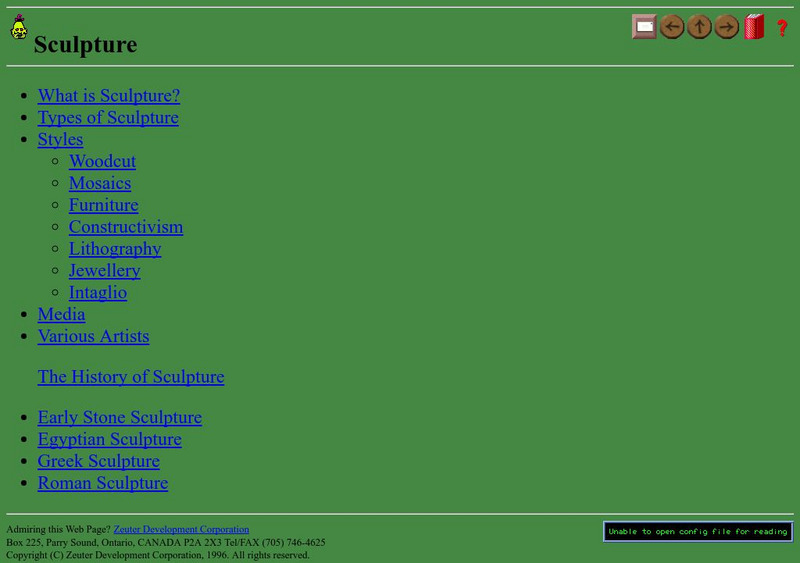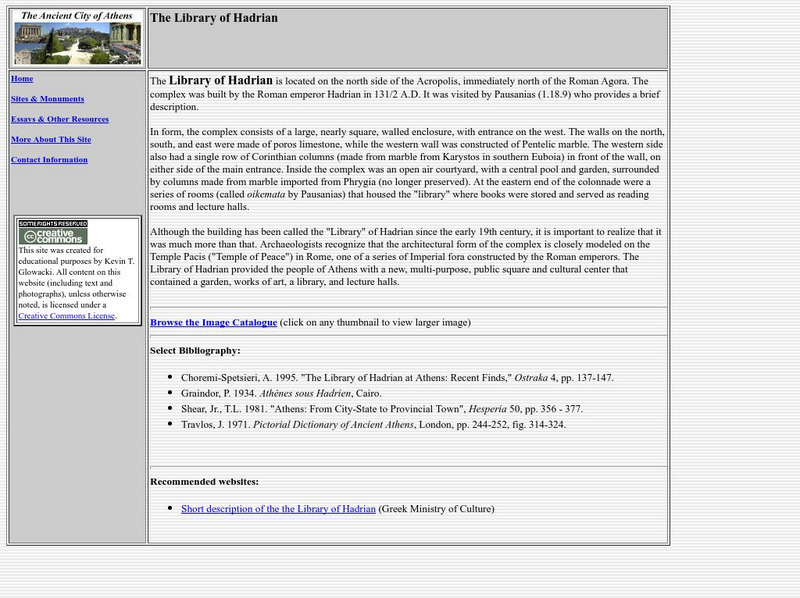Hi, what do you want to do?
Curated OER
Educational Technology Clearinghouse: Clip Art Etc: Byzantine Court
Constantine, the first Christian emperor, removed the capital of the world-empire from Rome to Byzantium, henceforth to be called Constantinople. Though the court, with all its splendor and power, was thus transferred to a city where...
Curated OER
Educational Technology Clearinghouse: Clip Art Etc: Lucerna
An oil lamp. The Greeks and Romans originally used candles; but in later times candles were chiefly confined to the houses of the lower classes. A great number of ancient lamps has come down to us; the greater part of which are made of...
Curated OER
Educational Technology Clearinghouse: Clip Art Etc: Lucerna
An oil lamp. The Greeks and Romans originally used candles; but in later times candles were chiefly confined to the houses of the lower classes. A great number of ancient lamps has come down to us; the greater part of which are made of...
Curated OER
Educational Technology Clearinghouse: Clip Art Etc: Palla
The palla, as well as the pallium and palliolum, was always a rectangular piece of cloth, exactly, or, at least, nearly square. It was, indeed, used in the very form in which it was taken from the loom, being made entirely by the weaver....
Curated OER
Educational Technology Clearinghouse: Clip Art Etc: Cyathus
A Greek and Roman liquid measure, containing one-twelfth of the sextarius, or .0825 of a pint English. The form of the cyathus used at banquets was that of a small ladle, by means of which the wine was conveyed into the drinking-cups...
Curated OER
Educational Technology Clearinghouse: Clip Art Etc: Halteres
Halteres were certain masses of stone or metal, which were used in the gymnastic exercises of the Greeks and Romans. Persons who practised leaping frequently performed their exercises with halteres in both hands; but they were also...
Curated OER
Educational Technology Clearinghouse: Clip Art Etc: Liber
The most common material on which books were written by the Greeks and Romans, was the thin coats or rind of the Egyptian papyrus. This plant was called by the Egyptians Byblos. The papyrus tree grows in swamps to the height of ten feet...
Curated OER
Educational Technology Clearinghouse: Clip Art Etc: Periscelis
An anklet or bangle, worn by the Orientals, the Greeks, and the Roman ladies also. It decorated the leg in the same manner as the bracelet adorns the wrist and the necklace the throat. The word, however, is sometimes used in the same...
Curated OER
Educational Technology Clearinghouse: Clip Art Etc: Clavis
A key. The key was used in very early times, and was probably introduced into Greece from Egypt; although Eustathius states, that in early times all fastenings were made by chains, and that keys were comparatively of a much later...
Curated OER
Educational Technology Clearinghouse: Clip Art Etc: Lectisternium
Sacrifices being of the nature of feasts, the Greeks and Romans, on occasion of extraordinary solemnities, placed images of the gods reclining on couches, with tables and viands before them, as if they were really partaking of the things...
Curated OER
Educational Technology Clearinghouse: Clip Art Etc: Lorica
A cuirass. The cuirass was worn by the heavy-armed infantry both among the Greeks and Romans. The soldiers commonly wore cuirasses made of flexble bands of steel, or cuirasses of chain mail, but those of generals and officers usually...
Curated OER
Educational Technology Clearinghouse: Clip Art Etc: Lorica
A cuirass. The cuirass was worn by the heavy-armed infantry both among the Greeks and Romans. The soldiers commonly wore cuirasses made of flexble bands of steel, or cuirasses of chain mail, but those of generals and officers usually...
Curated OER
Educational Technology Clearinghouse: Clip Art Etc: Ocrea
A greave, a leggin. A pair of greaves was one of the six articles of armour which formed the complete equipment of a Greek warrior, and likewise of a Roman soldier as fixed by Servius Tullius. They were made of various metals, with a...
Curated OER
Educational Technology Clearinghouse: Clip Art Etc: Ocrea
A greave, a leggin. A pair of greaves was one of the six articles of armour which formed the complete equipment of a Greek warrior, and likewise of a Roman soldier as fixed by Servius Tullius. They were made of various metals, with a...
Curated OER
Educational Technology Clearinghouse: Clip Art Etc: Sarcophagus of Scipio
Sarcophagus, plural Sarcophagi, is a kind of stone used among the Greeks for making coffins, and so called because it was believed to have the property of consuming the flesh of dead bodies deposited in it within a few weeks. Hence a...
Curated OER
Educational Technology Clearinghouse: Clip Art Etc: Arma
Homer describes in various passages an entire suit of armour, and we observe that it consisted of the same portions which were used by the Greek soldiers ever after. Moreover, the order of putting them on is always the same. The...
Curated OER
Educational Technology Clearinghouse: Clip Art Etc: Mithradates Vi Coin
An illustration of Mithradates VI on the face of a coin. Mithradates VI was king of Pontus in northern Anatolia (now in Turkey) from about 119 to 63 BC. Mithradates was a king of Greek and Persian origin, claimed descent from Alexander...
Other
Alien Travel Guide: All About Sculpture
This is a descriptive site that offers information on types, styles, media, artists, history, and periods in creation of sculpture.
Other
The Stoa Consortium: The Library of Hadrian
The Library of Hadrian is located on the north side of the Acropolis, immediately north of the Roman Agora. The complex was built by the Roman emperor Hadrian in 131/2 A.D. It was visited by Pausanias (1.18.9) who provides a brief...
Curated OER
Educational Technology Clearinghouse: Clip Art Etc: Tintinna'bulum
"Tintinna'bulum, a bell. Bells were of various forms among the Greeks and Romans, as among us. various specimens of them are given in the annexed cut." &mdash Smith; 1873
Curated OER
Educational Technology Clearinghouse: Clip Art Etc: Flavius Josephus
Flavius Josephus was a strange amalgamation of Jew, Greek, and Roman, admittedly not what he should have been, either as a teacher of Mosiac law, as a patriot, or as a public man; and yet he performed successfully what he could not have...
Curated OER
Educational Technology Clearinghouse: Clip Art Etc: Gladiators
This illustration shows various types of gladiators, each type with with his specific weapons attributed to him. Gladiators were swordsmen whose profession was to fight for the public amusement. Gladiators are said to have been borrowed...
Curated OER
Unesco: Slovakia: Wooden Churches of Slovak Part of the Carpathian Mountain Area
The Wooden Churches of the Slovak part of Carpathian Mountain Area inscribed on the World Heritage List consist of two Roman Catholic, three Protestant and three Greek Orthodox churches built between the 16th and 18th centuries. The...







